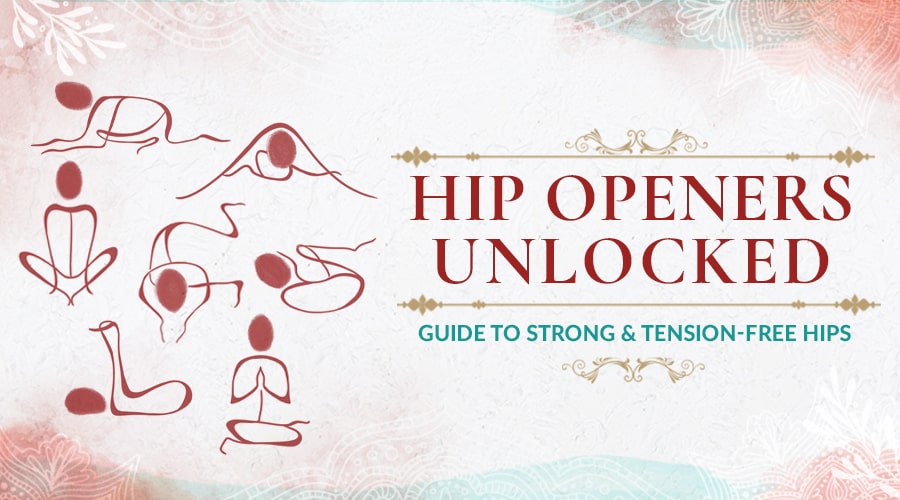Have you ever wondered where all your stress sits? You might say, "back", or "neck and shoulders". And while this is true, there is another crucial part of your body that bears the burden of tension, trauma, and negative energy: the hips.
Connecting your lower limbs and your torso, the hips act as a highway for fresh energy to flow and toxic tension to leave. In yoga, we practice hip openers to release physical tension and clear the way for emotional healing, spiritual growth, and connection.
Read on to uncover how hip opening stretches work, their proven benefits, and a simple yoga sequence you can practice daily to nurture strong and tension-free hips.
What Are Hip Openers?
Yoga hip openers are a collection of asanas (yoga poses) that target the muscles and joints in the hip complex. These poses gently stretch and open muscles in the hips, helping to alleviate tightness and improve overall flexibility and mobility.
Anatomy of Hip Openers Explained
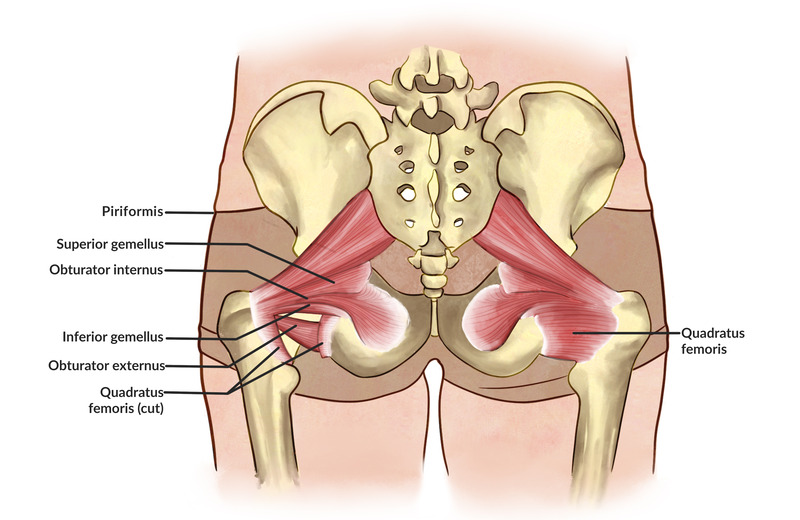
To understand the profound effects of hip openers, let's take a closer look at the anatomy Guide of this complex region.
The hips are one of the largest joints in the body, consisting of a network of muscles, ligaments, and joints that work together to support our body's movements. The primary muscles involved in hip openers are the hip flexors, hamstrings, glutes, adductors, and external rotators.
Deep Six Lateral Rotators
The lateral rotator group consists of several muscles that are responsible for the external rotation of the hip joint. These in include:
- Piriformis
- Gemellus superior
- Obturator internus
- Gemellus inferior
- Quadratus femoris
- Obturator externus
When we sit for long periods, lead inactive lifestyles, or hold onto unexpressed emotions, these muscles can become tight and restricted.
Certain hip opening yoga poses, such as Pigeon Pose, externally rotate the hip and stretch the deep muscles in the buttock. Engaging these muscles regularly can improve flexibility and release tension, boosting hip mobility and overall comfort.
Psoas Muscle
The psoas muscle is a large muscle located in your core, connecting your upper and lower body.
Forming part of the iliopsoas musculotendinous unit, the psoas muscle plays an important role in core stabilization and all kinds of movement, whether it be walking, running, sitting, bending, or yoga.
The psoas muscle is also considered to be a storehouse of unresolved emotions and tension. This is why you might experience strange emotions when practicing hip opening yoga poses that stretch this muscle, like Tree Pose.
The Hamstrings and Glutes
Have you felt a gentle pull in the back of your thighs in a Forward Bend? That’s yoga hip openers targeting your hamstrings.
Hip opening yoga poses like Standing Forward Fold (Uttanasana), create a lengthening and stretching effect on these muscles which helps release tension and increase flexibility.
Hip openers also engage the gluteal muscles, primarily the gluteus maximus, medius, and minimus. For instance, in yoga Figure Four (Supta Kapotasana), the hip joint externally rotates, stretching the deep muscles in the buttocks and engaging the glutes. The result is a nourishing release of tightness and improved hip mobility.
Adductor Muscles
When you open your legs wide, you’re engaging your adductors. Located in the inner thighs, these muscles stabilize the pelvis and control leg movements when you walk or run.
In seated yoga poses like Butterfly Pose (BaddhaKonasana), we press the knees gently towards the ground which stretches the adductors.
Also Read - 4 Tips on How to Teach Yoga for Arthritis Relief
Do Hip Openers Actually Release Emotions?
If you’ve ever felt an overwhelming wave of emotions in Pigeon Pose, you’re definitely not alone. The hips store emotional tension both physically and energetically, and in some instances, deeply traumatic events.
Think about what your body does when you have a bad day at work or somebody gives you a fright; your flight or fight mode is activated, causing the muscles in your jaw, neck, shoulders, hands, and hips to tense up.
The most important muscle in this process is the psoas muscle. When you experience any kind of stress or trauma, it contracts. The aftershock ripples through your body and remains here. If not released, it tightens and shortens the muscle which can cause a range of problems like back pain, leg pain, hip pain, and even digestive issues.
As we stretch these tight muscles with hip opening stretches, we awaken dormant energy and encourage the release of emotions that have been held captive for far too long. This process allows us to let go of past burdens and limiting beliefs, paving the way for personal growth, healing, and emotional freedom.
The hips and pelvis are also home to the Svadhisthana Chakra, the second chakra in our energy system.
Also called the Sacral Chakra, this energy center plays a vital role in our emotional and creative expression. It allows us to connect with others, experience pleasure, and embrace our sensuality. Hip opening yoga poses activate the Sacral Chakra, which can enhance our ability to feel and express emotions.
Benefits of Hip Opening Yoga Stretches
Among the various yoga poses we practice, hip openers hold a special place. These powerful asanas target muscles around the hips and pelvis, providing pain relief and a chance to let go of stress and negativity.
Below, we explore the incredible advantages of incorporating hip opening stretches into your daily yoga routine.
Increases Flexibility & Mobility
One of the most notable benefits of practicing hip openers in yoga is the significant increase in flexibility and mobility.
The muscles that surround the hips, such as the hip flexors, adductors, and rotators, tend to become tight due to prolonged sitting or inactive lifestyles. Hip openers gently stretch and release these tight muscles, gradually improving their range of motion.
With regular practice, you will notice increased flexibility and ease of movement in your hips, allowing you to perform more challenging yoga poses without pain or discomfort.
Lengthening these muscles in yoga can also benefit other forms of movement in your life, like running.
Reduces Hip & Lower Back Pain
Hip openers are particularly beneficial for people with lower back pain. The inactive nature of modern lifestyles, combined with stress and poor posture, causes muscles to tighten and compress, which can result in pain in your lower back and hips.
Yoga hip openers like Frog Pose target the deep muscles of the hips and lower back, reducing discomfort and promoting a happier back and hips.
Certain yoga poses that stretch the Piriformis muscle can also help alleviate pain from more severe back conditions, like sciatica.
Improves Posture
Poor posture habits can cause muscle imbalances and alignment issues, especially in the spine. Hip openers in yoga work to release tightness in the muscles responsible for stabilizing the hips, pelvis, and spine.
Daily practice can also strengthen the supportive muscles of the torso, improving core stability and encouraging a more upright posture.
Nurtures Creativity & Self Expression
As mentioned above, hip openers are strongly tied to the Sacral Chakra. Regular practice activates the second chakra, promoting emotional balance, creativity, and self-expression.
With a direct line to our emotions, we can connect with our feelings, embrace our sensuality, and explore our creativity without fear or hesitation. This can lead to a greater sense of emotional well-being and a more harmonious relationship with ourselves and others.
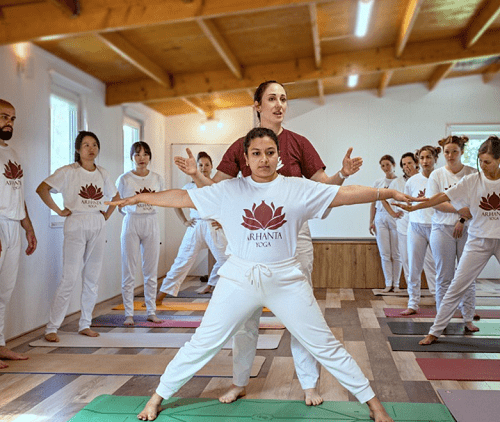
Experience authentic Hatha Yoga
Get free access to exclusive guided lessons with master teacher Kalyani Hauswirth-Jain
Hip Opening Yoga Sequence: 7 Stretches for Strong & Tension-Free Hips
Whether you sit in front of a computer all day or have a habit of harboring stress in your hips, including hip opening stretches into your yoga routine is key to cultivating a happier and healthier well-being. Try this soothing hip opening yoga sequence next time you need a release or a stronger center.
Note: These poses are ordered from low to high impact, so be sure to stay in a mild discomfort zone and only progress if it feels right. If you suffer from any preexisting back or hip issues, consult your doctor first.
1. Happy Baby Pose (Ananda Balasana)
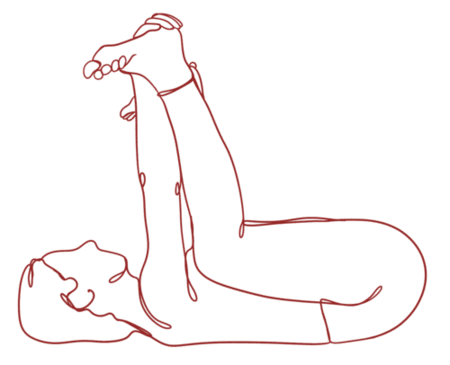
Happy Baby Pose is an excellent asana for achy hips as it gently stretches and opens the hip muscles. The wide stance targets the hip flexors, adductors, and external rotators, which all work wonders for your flexibility and mobility.
- Lie down on your back on a yoga mat or any comfortable surface.
- Bend your knees and bring them towards your chest.
- Separate your knees wider than your torso, and bring them towards your armpits.
- Reach your arms through the inside of your legs and hold onto the outer edges of your feet or ankles.
- Gently push your feet upwards towards the ceiling while using your hands to pull your knees down towards the floor, creating a resistance.
- Relax your shoulders, lengthen your spine, and find a comfortable position for your head and neck.
- Breathe deeply and hold the pose for 30 seconds to a minute, or longer if it feels comfortable.
2. Bound Angle Pose (Baddha Konasana)
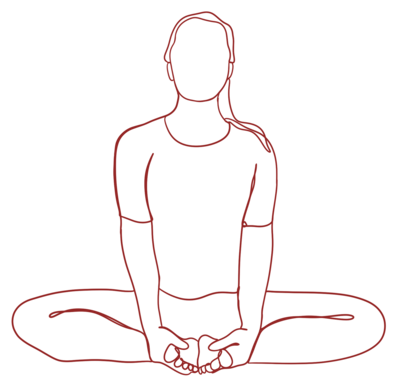
Bound Angle Pose, or Baddha Konasana in Sanskrit, provides a deep stretch to the inner thighs and glutes. As you bring the soles of the feet together and allow your knees to drop to the sides, the hip joints are gently opened, improving your range of motion and flexibility.
- Sit on your yoga mat with legs extended in front of you.
- Bend your knees and bring the soles of your feet together, allowing knees to drop out to the sides.
- Sit tall, lengthen your spine, and place your hands on the floor behind you for support.
- Adjust your feet for a gentle stretch in the inner thighs and groin. If you have sensitive knees, place a bolster or blanket under each knee for extra support.
- You can stay where you are, or for a deeper stretch, hinge at the hips while keeping your spine long.
- Let your knees relax and drop toward the floor without forcing them down.
- Stay in the pose for 1-3 minutes, breathing deeply and staying relaxed.
3. Womb Pose (Gharbasana)
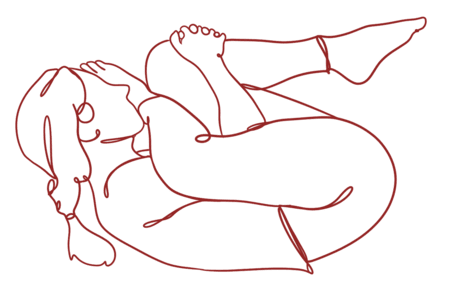
Womb Pose provides a deep opening in the hips, glutes, and spine. It lengthens the glutes and hip rotators, making it a great pose to relieve stress and boost mobility.
- Begin by lying on your back, with your legs extended and your arms resting alongside your body.
- Bend your knees, placing the soles of your feet flat on the floor.
- Separate your feet so they are hip-width apart. Your thighs should be parallel to each other.
- Straighten your right leg upward, extending your heel toward the ceiling.
- Then bend your right knee and cross your right ankle over your left knee.
- Then flex your right foot, actively pressing through your heel.
- On an exhalation, draw your left knee in toward your chest
4. Shoelace Pose
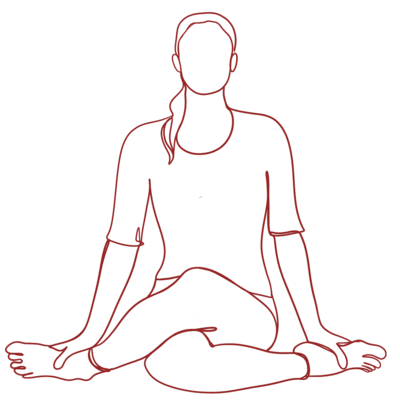
A popular pose in Yin Yoga, Shoelace Pose focuses on stretching and lengthening the muscles around the hip joint, as well as the lower back. Regular practice can increase your range of motion and provide much-needed pain relief for those with hip and back issues.
- Begin by sitting on your heels, with your knees close together.
- Shift your weight to the left side, resting onto your left hip.
- Cross your right leg over the left and place your right knee on top of the left knee. Then, bring your right heel near your left hip.
- Take a deep breath in, pressing both sitting bones firmly into the floor and lengthen your spine.
- Exhale slowly as you fold your torso forward.
- Rest your hands on the floor and lower your forehead to your knee or the floor in front of you.
5. Fire Log Pose (Agnistambhasana)
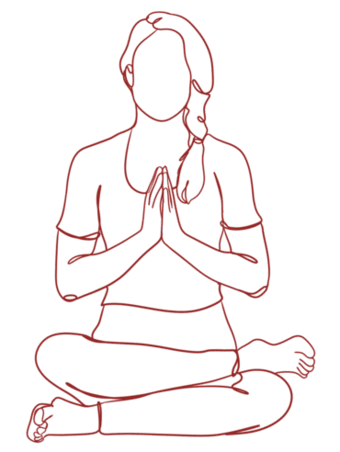
Fire Log Pose is a deep hip opening stretch that opens the glutes, groin, inner thighs, and the piriformis muscle.
- Sit on your mat, legs straight in front, spine aligned, and arms beside you.
- Bend your right knee and hug it close to your chest.
- Place your right ankle just above your left knee cap.
- Bend your left knee and slide your left shin under your right shin.
- Try to position your left ankle directly below your right knee.
- If possible, move your right ankle slightly to the left until it rests on your left knee.
- Your right foot will be raised off the floor, beside your left knee.
- Work towards aligning your shins parallel to the top edge of your mat, with your right shin directly above your left shin.
- Both shins should form a 90-degree angle with your thighs.
- Flex your feet and press through your heels.
- Rest your fingertips on the floor beside you, press your sitting bones down, lengthen your spine, and bring your hands together in prayer position.
- To intensify the pose, you can bend forward.
- Breathe evenly and hold the pose for as long as comfortable, then release and repeat on the other side.
6. Deer Pose
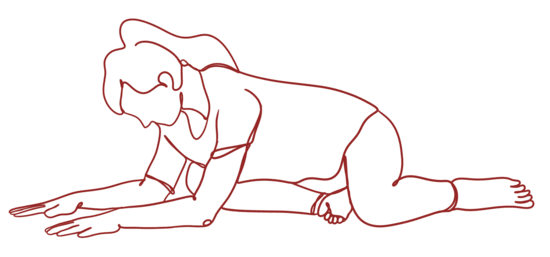
Deer Pose in Yin Yoga is a deep and rejuvenating hip opening stretch that specifically targets the outer hips and glutes. The lengthening of the hip rotator muscles is an excellent way to relieve tension in the body and enhance flexibility.
- Start seated on your mat in Bound Angle Position, with the soles of your feet together.
- Then lift your left leg and swing it behind you, positioning your foot past your hip and pointing towards the back.
- Adjust your position so that both sit bones are evenly grounded on the mat.
- Sit tall and lengthen your spine, allowing your shoulders to relax.
- If it feels comfortable, you can stay upright or gently hinge forward from your hips, maintaining a long spine.
- Reach out with the top of your head, elongating your spine and maintaining a sense of length throughout your body.
- Repeat the pose on the opposite side.
7. Sleeping Pigeon Pose (Supta Eka Pada Kapotasana)

Pigeon Pose is the holy grail of hip opening yoga poses, stretching key muscles like the quadriceps, psoas, deep lateral rotators, glutes and groin. Sleeping Pigeon has numerous benefits, helping improve posture, alleviate hip and lower back pain, and purge stress from the body.
- Begin on all fours, with your wrists directly under your shoulders and knees under your hips.
- Then, bring your right heel just in front of your left hip and push your fingertips firmly to the floor. Gently lower your leg down to the floor, bringing your right buttock as close toward the ground as possible.
- Slide your left leg back, keeping your hips facing the front of the mat.
- Exhale as you fold forward over your right leg, resting your forearms or forehead on the mat.
- Take deep breaths and hold the pose for 5-10 breaths, allowing your hips to relax and descend towards the floor.
- To release, inhale and press your hands into the mat, lifting your torso upright.
- Bring your right leg back and return to the all-fours position.
- Repeat the pose on the opposite side by bringing your left knee forward and sliding your right leg back.
How Long Does It Take to Open Tight Hips?
Opening the hips requires regular practice, but it's crucial to avoid pushing too far. By consistently and mindfully practicing hip-opening exercises, you will see noticeable improvements within about a month.
However, it's essential to delve deeper into your motivation for wanting to open your hips and assess your lifestyle, including work commitments, other forms of exercise, and any previous exercise-related experiences or injuries.
It's also important to acknowledge that people possess varying degrees of hip rotation due to differences in bone structure and skeletal shape. So, while progress is certainly achievable, it is vital to recognize and work within your body's unique capabilities and limitations.
Final Thought
Practicing hip opening stretches in yoga can truly work wonders for your body and overall well-being. These gentle poses are like a gateway between your two halves, and by cracking it wide open, we can foster greater self-awareness, emotional balance, and a profound connection with your body.

Experience authentic Hatha Yoga
Get free access to exclusive guided lessons with master teacher Kalyani Hauswirth-Jain

